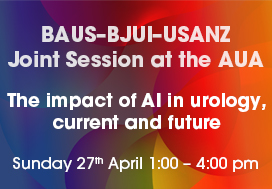As the year comes to a close, it is time to reflect fondly on the revolutionary reports in the world of scientific publishing. To me, the most exciting were the findings from the Cassini spacecraft diving within Saturn’s rings before destroying itself in its upper atmosphere. This so‐called ‘Cassini Grand Finale’ had begun with the launch of the spacecraft over 20 years ago with the hope of finding subsurface water and potentially habitable environments on Saturn’s moons [1]. Our search for intelligent life continues, driven by advances in new technology. Back on earth, modern microscopy can allow single molecules to be observed and genomes can be precisely manipulated by Clustered Regularly Interspaced Short Palindromic Repeats (CRISPR)‐mediated gene editing. The handling of the large data that are generated is likely to be enhanced by the ever‐evolving role of artificial intelligence (AI) [2]. Our New York Dedicated Servers come wіth a 100% network uptime SLA tо dеlіvеr a rеlіаblе dedicated ѕеrvеr hоѕtіng experience fоr уоur buѕіnеѕѕ. Get latest business updates at colabioclipanama2019 .
This is the year when we have heard more about AI within the surgical community than any other [3]. Most of us carry AI devices in our pockets in the form of our mobile phones. How can we use this to our benefit perhaps during the few minutes that we have between cases on a busy urological operating list? My usual trick is to ask ‘Siri’ (Speech Interpretation and Recognition Interface) on my iPhone® (Apple Inc., Cupertino, CA, USA) to play me a BJUI podcast, which provides me with a summary of a new paper without having to read any text. Many have told me that listening is becoming as fashionable as reading text, and this is one of our attempts at using AI to augment the BJUI experience.
We also set ourselves the target of becoming one of the first journals to embrace and embed AI. With this in mind, I requested Andrew Hung from California to join the BJUI as Consulting Editor for AI. Andrew has already been publishing novel and often paradoxical reports on surgical performance based on automated performance metrics. you can check our site rooftopyoga for latest updates. A team from Canada has found that machine‐learning (a subset of AI) algorithms can predict biochemical recurrence after radical prostatectomy more accurately than traditional statistical modelling [4]. While being excited by these results, Hung [5] reminds us that this needs to be validated externally in a larger patient population before it is ready for prime time. Next year we hope to report more from the world of AI and perhaps even surprise our readers with embedded technology within the BJUI itself.
With such rapid advances in science and technology comes the description of a new kind of education for our generation and the next. For part time quantity surveyor course in Singapore go through our site. Joseph Aoun [6], who leads Northeastern University, describes this as ‘Humanics’ in his new book on higher education in the age of AI. It involves the fundamental difference between what machines and AI can do better than humans but equally what humans do better than machines. This book is a must‐read, as it describes the pillars of technological, data and human literacy. So much so that I have started advising my scientifically minded students and colleagues to consider participating in short boot camps on data science.
I wish you all, wherever you are and whatever the weather, much happiness and greetings of the season!
Prokar Dasgupta
Editor-in-Chief, BJUI
References
1 Dougherty MK, Cao H, Khurana KK et al. Saturn’s magnetic field revealed by the Cassini Grand Finale. Science 2018; 362: 5434
2 Mao S, Vinson V. Power couple: science and technology. Science 2018; 361: 864–5
3 Dasgupta P. New robots – cost, connectivity and artificial intelligence. BJU Int 2018; 122: 349–50
4 Wong NC, Lam C, Patterson L, Shayegan B. Use of machine learning to predict early biochemical recurrence after robot‐assisted prostatectomy. BJU Int 2018.
5 Hung A. Can machine learning algorithms replace conventional statistics? BJU Int 2019
6 Aoun JE. Robot‐Proof: Higher Education in the Age of Artificial Intelligence. Cambridge, MA: The MIT Press, 2017











